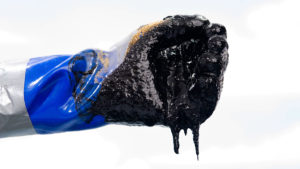Oil demand forecast to fall on COVID-19 fears

Pic: Getty Images
The impact of the COVID-19 outbreak is poised to result in a fall in global oil consumption, the first time since 2009, with the bottom falling out of benchmark prices after Saudi Arabia and Russia failed to agree to production cuts.
The International Energy Agency lowered its annual forecast by almost 1 million barrels per day (MMb/d) to 99.9MMb/d.
It noted that global oil demand had fallen 2.5MMb/d, or about 2.5 per cent, during the first quarter of 2020 as fears over the coronavirus slashed travel and economic activity.
However, the energy watchdog believes that oil consumption will bounce back and rise by 2.1MMb/d in 2021, though further growth will slow and rise by only 800,000 barrels per day by 2025.
This is due to slower than expected growth in demand for transport fuels as governments implement policies to improve car engine efficiency and push to cut greenhouse gas emissions.
While oil prices rallied on Tuesday following the 30 per cent slump on Monday, the market has not been kind to ASX-listed small cap oil and gas players this week.
That said there are a small number of companies that marked gains today.
Triangle Energy (ASX:TEG) received a late boost after confirming it had resumed production at its Cliff Head oilfield in the Perth Basin, offshore Western Australia.
The field is currently producing oil at a rate of 950 barrels per day and the company expects to optimise this over the coming days to a steady state level of 970 barrels per day.
Production was suspended in late February after an electrical fault was observed during routine maintenance.
Armour Energy (ASX:AJQ) eked out a 2.33 per cent rise to 4.4c after the Queensland Department of Natural Resources, Mines and Energy granted a production licence to a joint venture between Armour (10 per cent) and Australia Pacific LNG (90 per cent).
The award comes with a condition that could become more common for Australian East Coast licences – that gas from the licence be sold exclusively for local manufacturing.
APLNG and Armour expect to produce up to 103 petajoules of gas over 30 years from the block, about 22km southwest of Chinchilla, with first production expected in 2021.
Buru Energy (ASX:BRU) has notched gains since announcing on Monday that the coiled tubing unit had arrived on site to drill the horizontal section of the Ungani-6H well.
Completing this well could add substantially to the company’s oil production given that the earlier Ungani-7H well was responsible for a lift in oil output.
The Ungani field is currently producing about 1,500 barrels of oil per day, which compares well with the average of 1,130 barrels of oil per day it produced in the December 2019 quarter.
Other companies that kept their heads above the water include State Gas (ASX:GAS) and Whitebark Energy (ASX:WBE).
Related Topics

UNLOCK INSIGHTS
Discover the untold stories of emerging ASX stocks.
Daily news and expert analysis, it's free to subscribe.
By proceeding, you confirm you understand that we handle personal information in accordance with our Privacy Policy.








